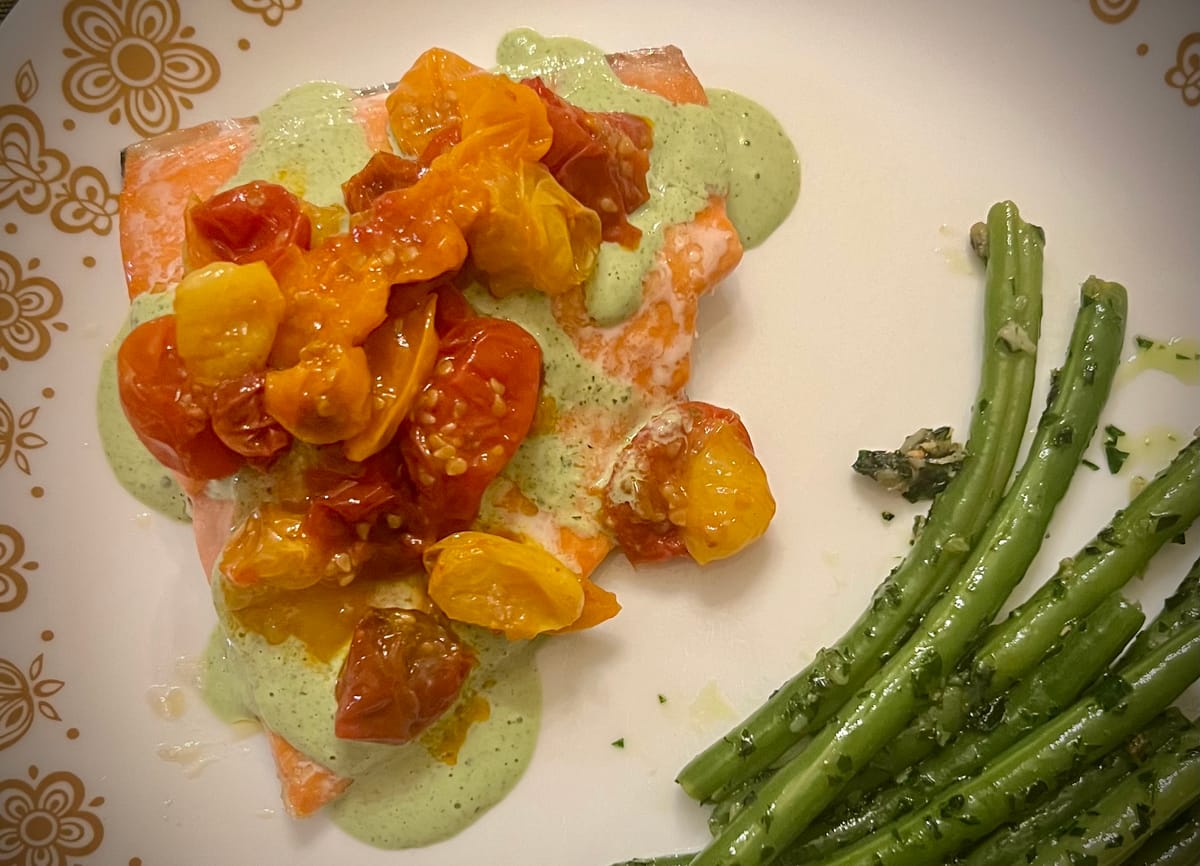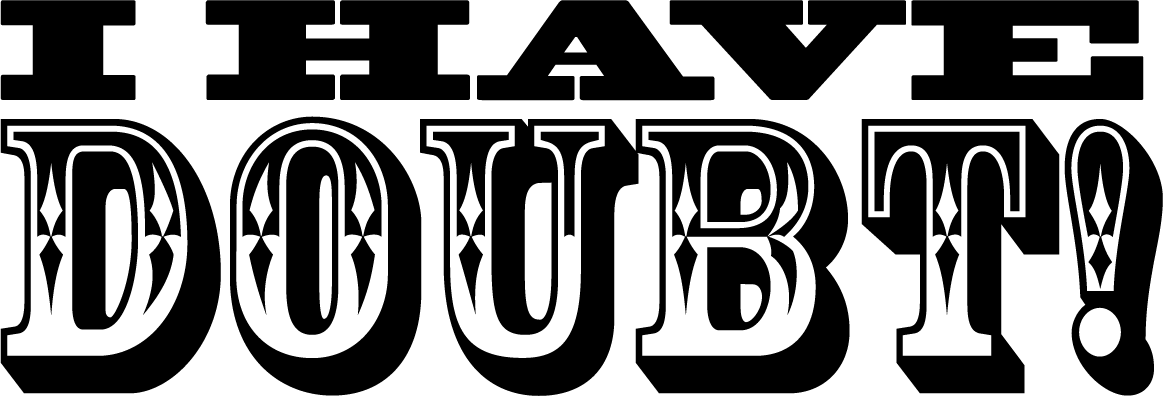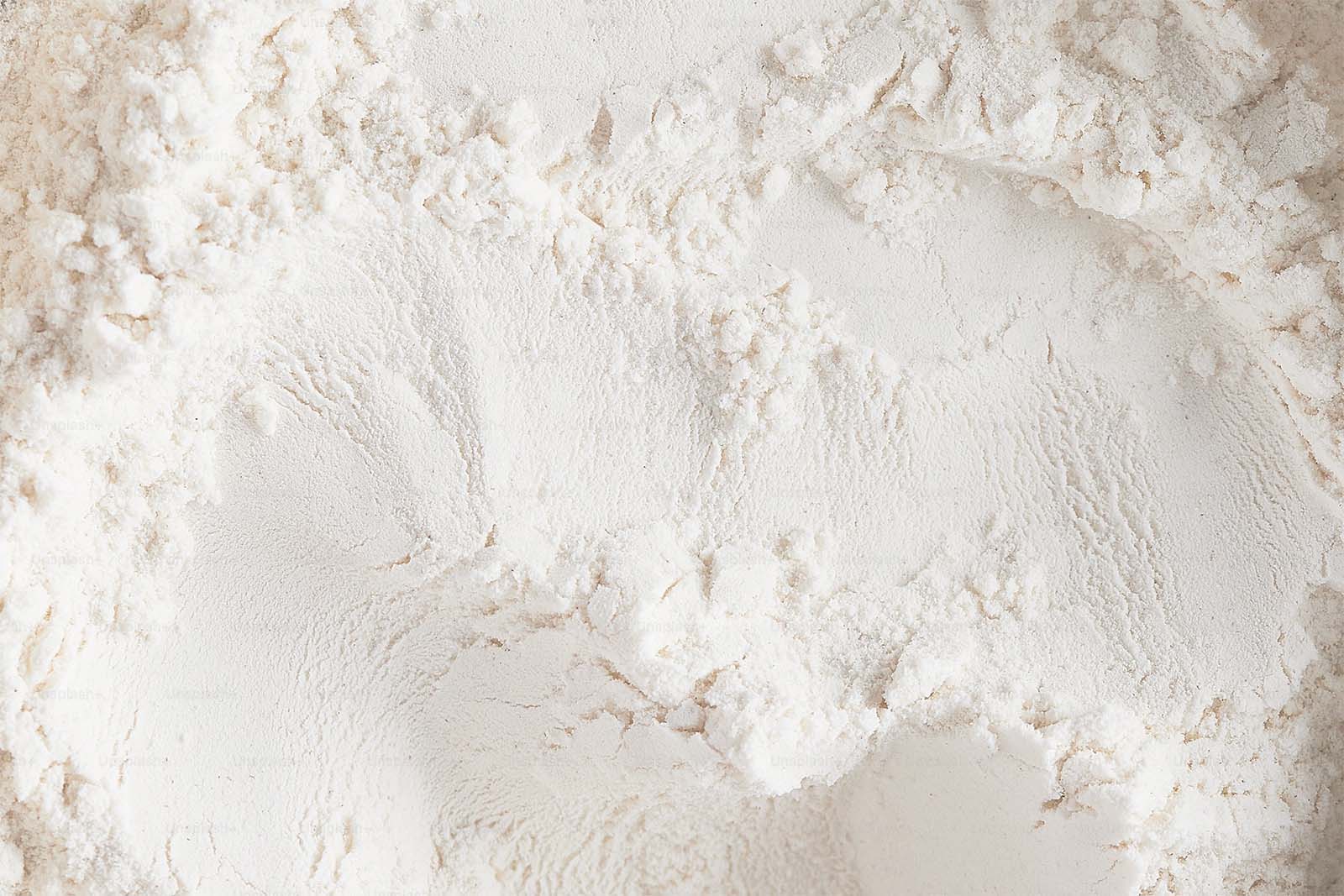Sous vide pros & cons
It's Sous Vide Week at I Have Doubt! I'm kicking things off with a look at what makes cooking with sous vide great, and also its drawbacks.
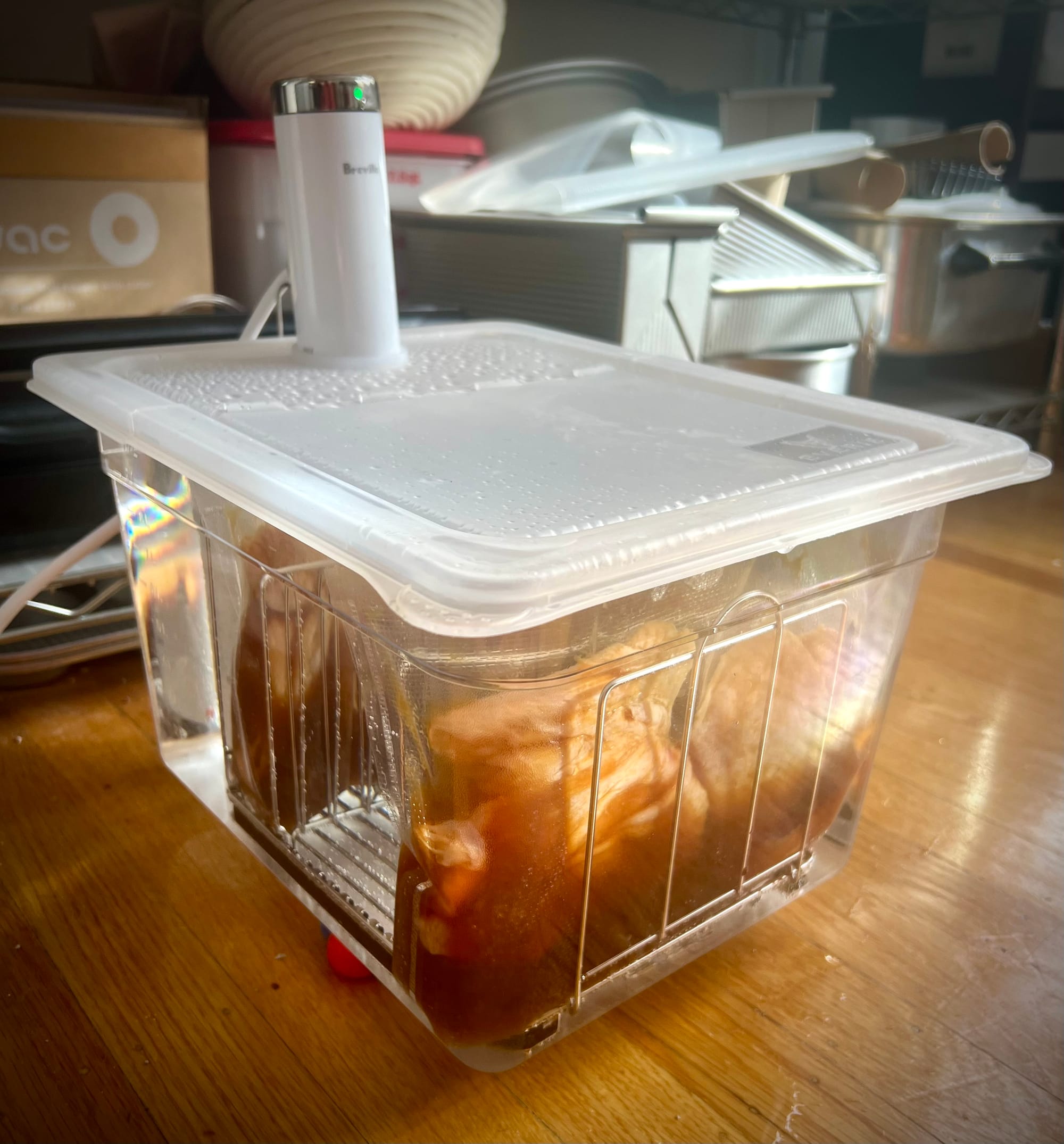
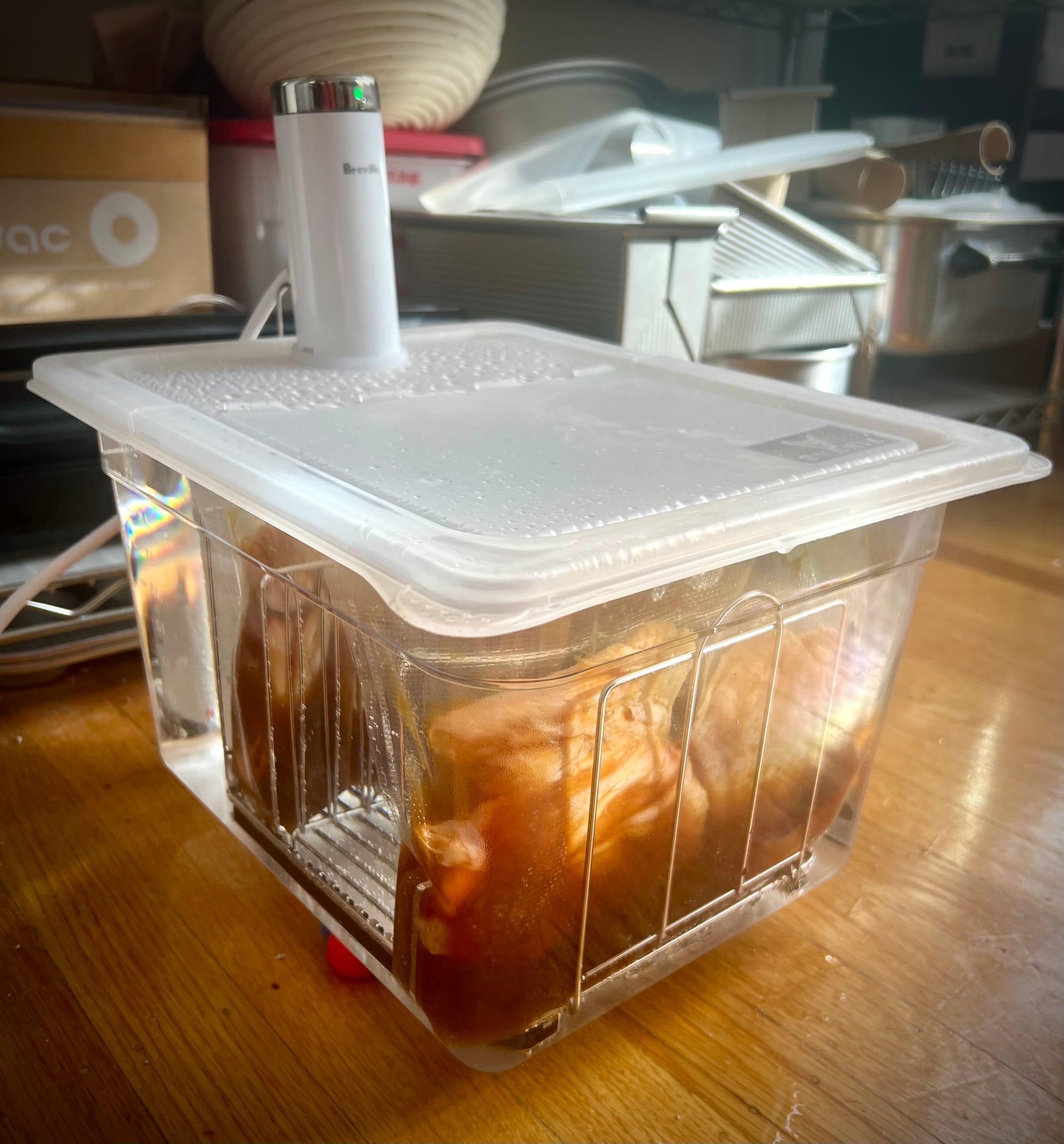
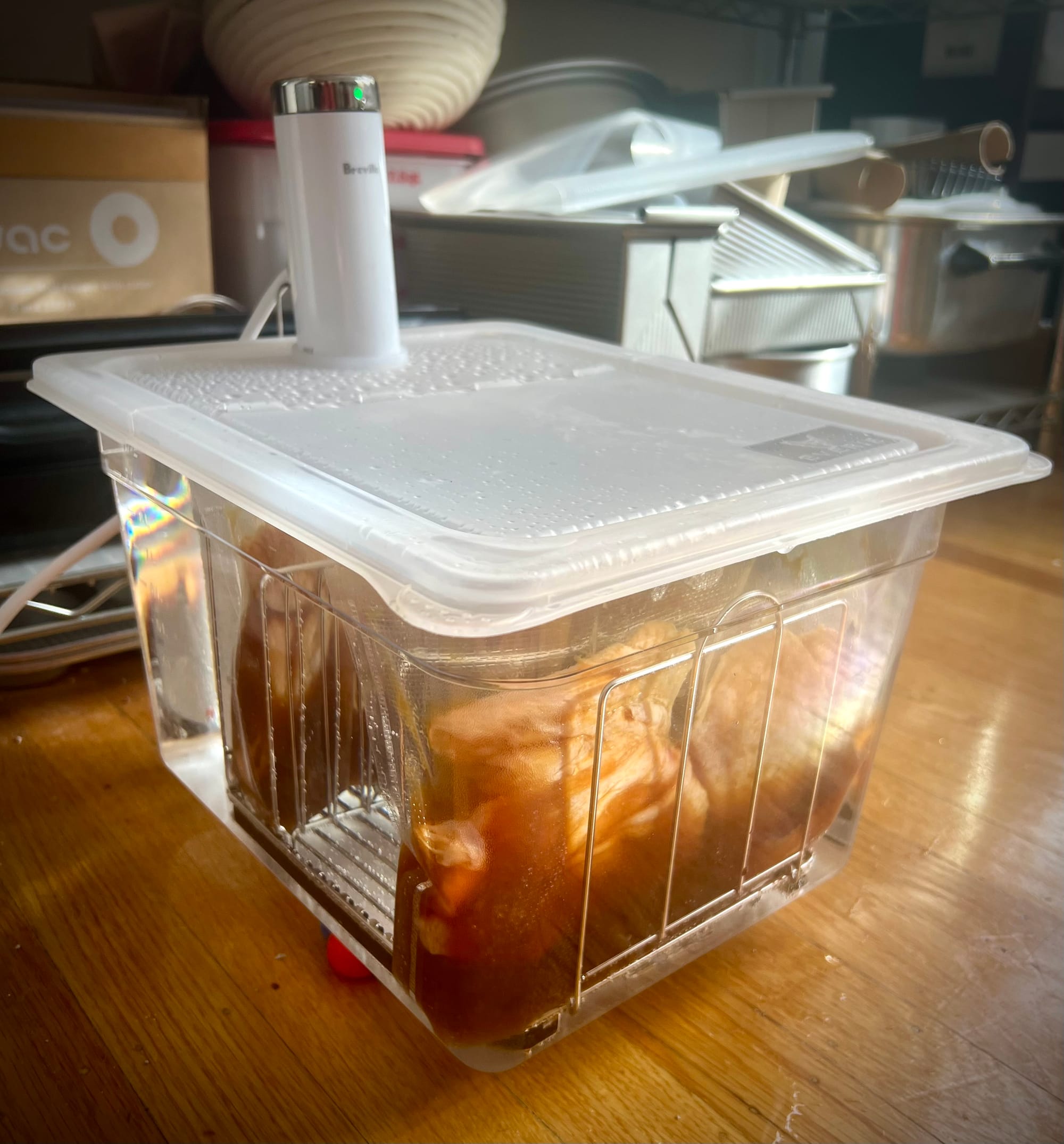
I had a request for more about sous vide when I shared my recipe for Star Anise Chicken last week, and I have some free time since Wanda and I are taking a week off from school... so, welcome to something that literally only one person kinda asked for, it's Sous Vide Week!
This is the first post in a five-post series about the sous vide cooking method:
- Sous vide pros & cons (this post)
- How I use sous vide
- How to try sous vide without special equipment
- Sous vide equipment
- Sous vide books, recipes, and other resources
What is sous vide?
Sous vide is a cooking method where a water bath is kept at a precise temperature, and food immersed in this bath (vacuum sealed in a plastic bag, typically) reaches that exact temperature throughout. This ensures that the food is evenly cooked from the outer edge to the inner core. The food that you're cooking will not be undercooked or overcooked; it will be just right every time.
Contrast this with the common approach of oven roasting: the air inside the oven is heated much higher than the target temperature you're trying to get in what you're roasting. This means that the outer temperature of your roast will be higher than at the center. It also means that you have to time removing the food from the oven just right: too early, and it won't be cooked all the way through; too late, and it'll be overdone.
My sous vide experience
I've been cooking sous vide for about a year and a half now. I probably use it about once a week or so. I still have a lot to learn, and the way I use it is pretty simple, but I'm starting to get a little more experimental with it. I'm in that awkward phase of being excited enough to spout off on the subject, but I'm nowhere near experienced enough to recognize when I may have my head up my ass. Take that into account as you read what I have to say.
Pros of sous vide
Perfect food, every time
The outstanding end result you get when cooking sous vide is the main attraction and the biggest upside. The flavors tend to be pure and slightly intensified, and the texture is like that one most perfect bite—only every bite is perfect. I can only do so much to convey that in text—you kinda have to try it yourself to see the difference. But I can blather on about some other upsides.
It's low-effort
We're talking slow cooker-level easy. You put food in a bag with some salt and oil, seal it, heat some water, drop the bag in, and walk away. There's no monitoring, no basting, not even any checking to see if it's done yet. When it is done, it can just hang out waiting until you're ready, even for a couple hours.
It's hard to goof up
The water temperatures of sous vide are low. Where an oven is commonly 350°-450°, sous vide temperatures are more in the neighborhood of 135°-175°. That's why it can't get overcooked (though if it sits for hours & hours, apparently it can turn mushy). And because you don't have to worry about overcooking, you're not going to feel an urge to pull it too soon, so it won't be undercooked, either.
Precision
I can fine-tune the final texture I want in my final dish by setting the temperature of the water bath. Do I want my salmon to be buttery (120°), or flaky (130°)? Do I want my pork pink and tender (140°), or white and firm (150°)?
The finished food keeps well
Two of your greatest enemies in food preservation—oxygen and bacteria—are greatly reduced in sous vide. Vacuum sealing removes air, and the hot water bath pasteurizes the food. If you keep the bag sealed after you've cooked your food, it can keep in the fridge much longer than you're used to. I'll be getting more into food safety on Friday when I'll be sharing resources.
No rushing to get the final timing right
I've never enjoyed the final mad dash to pull a meal together. I don't like the keep-the-plates-spinning feeling when you're trying to get all the components ready at the same time, at an ideal temperature. Having the main attraction hang out in a water bath until I'm ready means I get to float through the kitchen on a placid sea, focusing my full attention on sides and sauces, and even tidying the kitchen.
You can cook food in advance
Speaking of timing: say you're having a dinner party, or a holiday meal. You can sous vide the food a couple days in advance, keep it in the fridge, then only have to do final touches on the dish before serving. You can even use sous vide to reheat the food. The quality will be the same, and in fact high-end restaurants like French Laundry do this.
It minimizes raw meat handling
This is a biggie for me. I have never really become comfortable with handling raw meat. I think it's a healthy discomfort: I'm mindful of contamination risk, and which surfaces need careful cleaning, and of washing my hands immediately after handling. It's a hassle! With sous vide, I'm just salting and oiling the meat before it goes in the bag. Once the bag is sealed, and my hands and surfaces are washed, I'm done thinking about cross-contamination. I still am mindful of food safety issues, especially relating to food temperatures, but I find them much easier to manage than cross-contamination concerns.
Cons of sous vide
No Maillard reaction
The Maillard reaction is the name for the browning that you get when meat is seared in a pan, or roasted in a hot oven. It creates hundreds of new flavor compounds that play a huge role in the flavor of great food. Think of the taste difference between a plain marshmallow and one that's been toasted: that's Maillard at work.
You won't get any Maillard with sous vide. Because of that, it's not uncommon for people to include some Maillard generation either before or after putting it in sous vide. For example, giving meat cooked sous vide a quick sear in a very hot pan—long enough to create those complex flavors, but short enough to keep the inner texture from overcooking. Another option is a short hit under a broiler, or even a kitchen blow torch, like the ones used for making crème brûlée.
Funny seam lines on the food
Because the food you cook is vacuum sealed in a bag, it comes out looking... not very cute. Around the edges of your food, where the two sides of the bag meet the food, you'll have a seam line, like it came out of a factory. Honestly, it bothered me at first, but now I'm over it and I don't notice. The pan searing I mentioned just above solves the issue, or sauce.
It's slow
It takes time for the water to heat up, and then it takes time for the food to reach the right temperature. That rules out deciding at 5:30pm that you want to use sous vide that night for dinner.
It's kinda ruined me for non-sous vide cooking
Now that I know how to get perfectly cooked chicken and salmon, every bite of overcooked chicken or salmon has become an intolerable tragedy.
Plastic
Folks are understandably squeamish about cooking in plastic, and that's a good instinct to have. Personally, it's not something I worry about—the plastics used for sous vide aren't the "bad" ones. Sous vide is used frequently in restaurants and in foods sold at the grocery store, so odds are good you're already eating sous vide food. But if you'd rather play it safe and not use sous vide because food+plastic+heat, I'm not going to try to dissuade you.
Plastics of any sort are a scourge on our planet. I would wager that each of us is a very mixed bag of angels and devils when it comes to changing our ways to do better by the environment. I use cloth towels instead of paper towels, I drink my morning coffee with oat milk, our landfill can in the kitchen is only a teeny little 4 gallon bin—but sadly, I still use a lot of single-use plastic in the kitchen, and sous vide is part of that. I would love to see more viable reusable bags for sous vide and vacuum sealing in general.
The online communities are ass
I've been a part of online communities since way back in the BBS days of the early '90s. They've always been a mixed bag, but on the whole, online communities have been a very positive thing in my life. Most of the cooking and baking communities I've found have been helpful, supportive cheering sections. The sous vide communities I've seen... have not.
So, I'll be your helpful and supportive sous vide community, if you want. Ask your questions, especially the ones that feel silly. I'll try my best to help, and I'll be willing to say "I don't know!" (after all, I'm new to this, too) and help you figure out where to get an answer.
Coming tomorrow
In tomorrow's post, I'll share what I use sous vide for, including some recipes, and a little bit of how I'm figuring out how to adapt non-sous vide recipes.
